Discovering mice in your home can be unsettling and concerning. Not only can these rodents damage wiring and fabrics, but they also pose serious health risks by carrying diseases like Hantavirus and Rat-Bite Fever. While traditional solutions include poisons and traps, many homeowners prefer natural repellents that are safe for families and pets. This comprehensive guide explores the most effective natural methods to keep mice away from your home without resorting to harsh chemicals. Some of the best homemade mice remedies involve using ingredients like peppermint oil, which is known to repel mice due to its strong scent. Additionally, setting up barriers with natural substances such as cayenne pepper can further deter these pests from entering your living space. By implementing these strategies, homeowners can effectively manage mouse problems while ensuring a safe environment for their families and pets. In addition to natural repellents, many homeowners are turning to humane mouse removal techniques that allow them to safely relocate mice without harming them. These methods not only help maintain a pest-free environment but also promote a more compassionate approach to dealing with wildlife. By understanding the habits and behaviors of mice, you can implement preventative strategies that minimize their chances of entering your home in the first place. From using essential oils to sealing entry points, there are various strategies to deter these pests. Homeowners seeking practical solutions will appreciate this guide, which will detail how to eliminate mice in house effectively and safely. Implementing these methods not only safeguards your home but also promotes a healthier environment for everyone.
Quick Picks: Best Natural Mouse Repellents
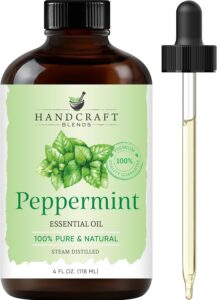
Editor’s Choice
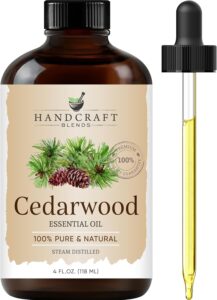
People’s Choice
- Why Choose Natural Mouse Repellents?
- Understanding Mouse Behavior: The Key to Effective Repellents
- Peppermint Oil: Nature’s Most Powerful Mouse Deterrent
- Cedar Oil: A Powerful Natural Deterrent
- Essential Oil Blends and DIY Repellent Recipes
- Other Effective Natural Mouse Repellents
- When to Call Professional Pest Control
- Limitations of Natural Repellents
- Creating a Combined Approach for Maximum Effectiveness
- Frequently Asked Questions
- Conclusion: Creating a Mouse-Free Home Naturally
Why Choose Natural Mouse Repellents?

When dealing with a mouse problem, natural repellents offer several advantages over conventional methods like poisons and traps:
Safe for Families
Natural repellents don’t pose risks to children and pets, unlike toxic chemicals that could lead to accidental poisoning.
Home-Friendly
Most natural solutions won’t damage your furniture, floors, or belongings when used properly.
Cost-Effective
Many natural repellents can be made from ingredients you already have at home or purchased inexpensively.
Environmentally Friendly
Natural solutions won’t contribute to ecological harm or pollution like chemical alternatives might.
Understanding Mouse Behavior: The Key to Effective Repellents

To effectively repel mice, it’s important to understand what drives their behavior. Mice have poor vision but possess an exceptional sense of smell. They rely heavily on their olfactory abilities to find food, detect danger, and navigate their environment.
This heightened sensitivity to scents is what makes aromatic repellents so effective. Certain smells are naturally repulsive to mice, causing them to avoid areas where these odors are present. By strategically using these scents, you can create barriers that mice are reluctant to cross.
Additionally, mice are creatures of habit. They prefer to travel along walls and established pathways, which makes targeted application of repellents along these routes particularly effective.
Peppermint Oil: Nature’s Most Powerful Mouse Deterrent
Peppermint oil stands out as one of the most effective natural mouse repellents. The strong, minty scent that humans find refreshing is overwhelming and unpleasant to mice’s sensitive noses.
Peppermint Essential Oil
Editor's ChoiceHow Does It Work
How to Use
- Mix 10-15 drops with water in a spray bottle and apply along baseboards, entry points, and areas where mice activity has been noticed
- Place cotton balls soaked with 5-10 drops of oil in cabinets, pantries, and other mouse-prone areas
- Use in a diffuser in rooms with mouse activity
- Reapply every 3-5 days for maximum effectiveness
- Completely natural and non-toxic
- Pleasant smell for humans
- Can be used throughout the home safely
- Also effective against other pests
- Versatile application methods
- Requires regular reapplication
- Strong concentration may be too potent for some people
- May not be effective for severe infestations
- Can damage finished wood surfaces if applied directly
How to Use Peppermint Oil as a Mouse Repellent
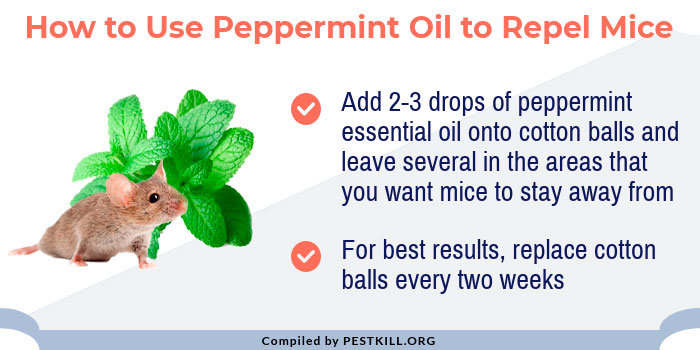
There are several effective ways to use peppermint oil to keep mice away from your home:
- Spray Solution: Mix peppermint oil with water in a spray bottle. A good ratio is 10-15 drops of oil per cup of water, with a drop of dish soap to help the oil and water mix properly. Spray this solution along baseboards, entry points, and areas where you’ve seen mouse activity.
- Cotton Ball Method: Place cotton balls soaked with 5-10 drops of pure peppermint oil in cabinets, drawers, pantries, and near suspected entry points. Replace every 5-7 days as the scent fades.
- Diffuser Approach: Use an essential oil diffuser to disperse peppermint oil throughout a room. This is particularly effective in confined spaces like garages, attics, or basements.
Peppermint oil can spread its fragrance effectively when rubbed like a towel over surfaces, leaving behind a potent scent without moisture that might damage sensitive materials.
Cedar Oil: A Powerful Natural Deterrent
Cedar Essential Oil
People's ChoiceHow Does It Work
How to Use
- Dilute with water in a 1:5 ratio and spray along baseboards and entry points
- Apply a few drops directly at entry points where mice may be entering
- Soak cotton balls in cedar oil and place in cabinets, drawers, and other dark spaces
- Mix with lemongrass or citronella oil for enhanced effectiveness
- Natural and safe for household use
- Pleasant woody scent for humans
- Effective against multiple pests
- Can be mixed with other repellent oils
- Available in various forms including chips and sprays
- May lose potency after a few hours
- Requires regular reapplication
- Strong cedar scent may be overwhelming in confined spaces
- Can damage certain finishes if applied directly
Cedar oil, derived from conifer trees of the cypress family, is another effective natural mouse repellent. It contains essential oils with natural compounds, hydrocarbons, and acids that mice find irritating and unpleasant.
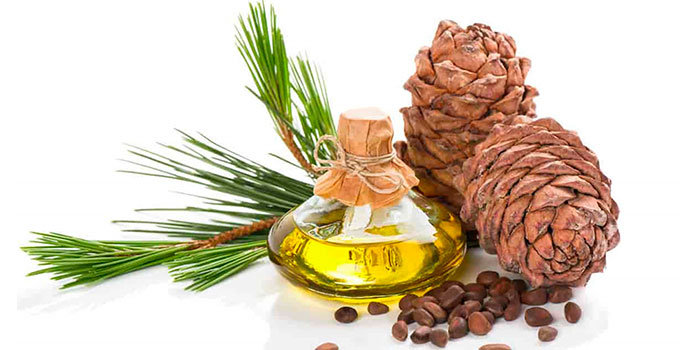
How to Use Cedar Oil as a Mouse Repellent
There are three primary methods for applying cedar oil to repel mice:
Sprinkling Method
This is the simplest application method, involving directly applying undiluted cedar oil at entry points and along mouse pathways. While straightforward, this approach uses more product than other methods.
Sprinkling works best when you know exactly where mice are entering. For larger areas or when you’re not certain of entry points, diluted spray solutions are more economical.
Spray Solution
Dilute cedar oil with distilled water or alcohol, then transfer to a spray bottle. Apply the solution along baseboards, entry points, and areas where you’ve noticed mouse activity. This method is economical and allows for broader coverage.
Cotton Ball Technique
Soak cotton balls in cedar oil and place them strategically where mice might enter or travel. For longer-lasting effectiveness, consider mixing cedar oil with lemongrass, citronella, or peppermint oil to enhance potency.
While cedar oil is generally safe, always wear gloves when handling undiluted essential oils to avoid skin irritation. Keep pure cedar oil away from children and pets, and avoid direct contact with eyes, nose, and mouth.
Essential Oil Blends and DIY Repellent Recipes

While peppermint and cedar oils are effective individually, combining multiple natural repellents can create an even more powerful deterrent. Here are some effective DIY essential oil blends to keep mice away:
Multi-Oil Spray Recipe
- Mix 10 drops each of peppermint, cedar, and lemongrass oils in a spray bottle
- Add 2 cups of water and 1/4 teaspoon of dish soap (to help oils mix with water)
- Shake well before each use
- Spray along baseboards, entry points, and areas with mouse activity
- Reapply every 3-5 days or after cleaning
Hot Pepper Repellent Spray
This potent natural spray uses the capsaicin in hot peppers to create a powerful mouse deterrent:
- Boil 1 gallon (16 cups) of fresh water in a large pot
- In a food processor, blend 1/2 cup of chopped habaneros and 2 tablespoons of hot pepper flakes
- Pour the pepper mixture into a bucket and add the boiling water
- Cover and let sit for 24 hours
- Strain the mixture through cheesecloth into a clean bucket
- Transfer to spray bottles and apply where needed
Always wear gloves and eye protection when preparing and applying hot pepper spray. Avoid spraying on carpets or fabrics as it may cause discoloration. Keep away from children and pets.
Other Effective Natural Mouse Repellents
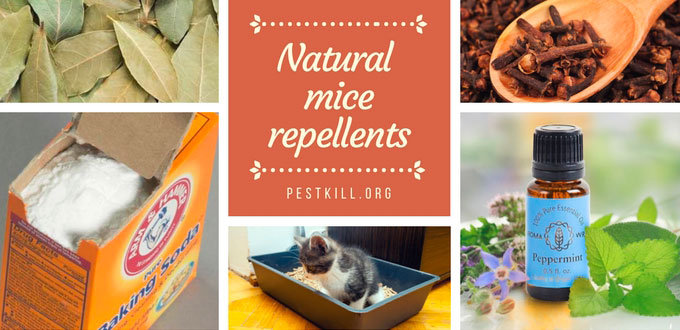
Beyond essential oils, several household items can be repurposed as effective mouse deterrents:
Dryer Sheets
The strong fragrance in dryer sheets is unappealing to mice. Their sensitive noses find the intense scent overwhelming, which makes dryer sheets a convenient and readily available repellent option.

How to Use Dryer Sheets
- Rub dryer sheets along suspected mouse pathways to leave their scent
- Place whole or cut sheets in cabinets, drawers, and corners where mice might travel
- Focus on areas like kitchen cabinets, pantry corners, and under sinks
- Replace sheets every 1-2 weeks or when the scent fades
- Readily available in most homes
- Inexpensive solution
- Pleasant scent for humans
- Easy to apply in most areas
- Mice may eventually become accustomed to the smell
- Cannot reach tight spaces where mice travel
- Less effective for larger infestations
- Requires frequent replacement
Bleach Solution
Bleach has a strong, caustic smell that mice find extremely unpleasant. While primarily effective as a repellent, bleach also serves as a disinfectant, helping eliminate harmful bacteria from mouse droppings.
How to Use Bleach as a Repellent
- Mix bleach with water in a 1:10 ratio (one part bleach to ten parts water)
- Transfer to a spray bottle
- Apply along baseboards, corners, and suspected entry points
- Leave one area untreated to give mice an exit route
Bleach is caustic and can damage finishes on wood floors, furniture, and painted walls. Always test in an inconspicuous area first, ensure proper ventilation when using, and keep away from children and pets.
Kitty Litter
Used kitty litter contains the scent of a natural predator, making it an effective deterrent. Mice instinctively avoid areas where they detect predator waste.
How to Use:
- Place small amounts of used kitty litter in areas with mouse activity
- Focus on entry points and exterior perimeters
- Replace regularly to maintain the scent
Additional Natural Deterrents
- Bay Leaves: Place whole bay leaves in cabinets, pantries, and drawers. Mice dislike their pungent scent.
- Cloves: Whole cloves or clove oil can be placed around entry points and pathways to deter mice.
- Ammonia: Mimics the smell of predator urine. Soak cotton balls and place in problem areas.
- Baking Soda: Sprinkle near entry points and areas with mouse activity.
When to Call Professional Pest Control
While natural repellents are effective for prevention and minor infestations, there are situations when professional intervention becomes necessary:
If you see mice during daylight hours, find numerous droppings in multiple areas, hear extensive scratching in walls, or discover nests with babies, these indicate a severe infestation requiring professional treatment.
- Large-Scale Infestations: If you’re seeing multiple mice daily or evidence of extensive activity throughout your home, DIY methods may not be sufficient.
- Recurring Problems: When mice return despite your best efforts with natural repellents and prevention methods.
- Structural Concerns: If mice have damaged wiring, insulation, or structural elements of your home, professionals can address both the infestation and necessary repairs.
- Health Risks: Homes with immunocompromised individuals, elderly, or very young children may benefit from professional elimination to minimize health risks.
Professional pest control services can offer integrated approaches that combine exclusion techniques (sealing entry points), targeted trapping, and ongoing prevention strategies, often with guarantees for their work.
Limitations of Natural Repellents
While natural repellents offer many advantages, it’s important to understand their limitations for realistic expectations:
- Effective for prevention and mild problems
- Safe around children and most pets
- Environmentally friendly approach
- Can be implemented immediately
- May not eliminate established colonies
- Require consistent reapplication
- Some mice may develop tolerance over time
- Cannot reach all hiding places mice use
Natural repellents work best as part of a comprehensive strategy rather than as standalone solutions. For complete mouse control, combine repellents with proper sanitation, exclusion measures (sealing entry points), and if necessary, humane trapping methods.
Natural repellents typically show results within 3-7 days for minor problems. If you don’t see improvement after two weeks of consistent application, consider additional control measures or professional consultation.
Creating a Combined Approach for Maximum Effectiveness
The most successful mouse control strategies employ multiple techniques simultaneously. Here’s a comprehensive plan that leverages natural repellents alongside other effective methods:
Identify all signs of mouse activity (droppings, gnaw marks, nests, travel routes) and determine the severity of the problem. Clean and disinfect affected areas using a solution of 1 part bleach to 10 parts water to eliminate existing scent trails.
Seal all potential entry points with steel wool, caulk, or hardware cloth. Focus on gaps around pipes, vents, and foundation cracks. Remove food sources by storing all food in airtight containers and cleaning thoroughly after meals.
Apply multiple types of natural repellents strategically throughout your home. Use peppermint oil near entry points, cedar oil along baseboards, and place repellent pouches in enclosed spaces like cabinets and drawers.
Check regularly for new signs of mouse activity. Refresh natural repellents on a consistent schedule (every 3-7 days). Adjust your strategy based on results, adding additional measures if needed.
By implementing this layered approach, you create an environment that’s both uninviting and inaccessible to mice, significantly increasing your chances of long-term success without resorting to toxic chemicals.
Frequently Asked Questions
How long do natural mouse repellents last?
Most natural repellents like essential oils require reapplication every 3-7 days as their scent fades. Commercial products typically last longer, with some pouches effective for up to 90 days. Environmental factors like airflow, temperature, and humidity can affect longevity.
Are natural repellents effective for large infestations?
Natural repellents work best for prevention and minor mouse problems. For severe infestations, you’ll need a comprehensive approach combining multiple methods, including traps, sealing entry points, and possibly professional assistance. Natural repellents should be part of your strategy but not the only solution.
Can mice become immune to natural repellents?
Mice can become accustomed to some scents over time if constantly exposed. Rotating between different natural repellents and changing their placement periodically helps prevent adaptation. Using combinations of different repellents is also more effective than relying on just one.
Are essential oils safe to use around pets?
Many essential oils, particularly concentrated forms, can be harmful to pets, especially cats. Always dilute oils properly, keep pets away from freshly treated areas, and research specific oils before use. Avoid diffusing essential oils in enclosed spaces with birds, as their respiratory systems are particularly sensitive.
How do I know if mice are gone after using repellents?
Signs that mice have left include: no new droppings, no sounds of scratching or scurrying, no more gnaw marks on food packages, and no mouse sightings. Continue using repellents for several weeks after these signs disappear to prevent reinfestation. Setting up non-toxic monitoring stations can help confirm their absence.
Can I make my own essential oil mouse repellent?
Yes, you can make effective DIY repellents by mixing 10-20 drops of essential oil (peppermint, cedar, eucalyptus, or citrus) with 2 cups of water and a drop of dish soap in a spray bottle. Shake well before each use and apply to areas with mouse activity. For a stronger solution, soak cotton balls directly in oil and place in problem areas.
Conclusion: Creating a Mouse-Free Home Naturally
Natural mouse repellents offer an effective, safe, and environmentally friendly approach to keeping mice away from your home. By understanding mouse behavior and leveraging their sensitive sense of smell, you can create an environment that naturally deters these unwanted visitors without resorting to harmful chemicals or cruel traps.
For best results, combine multiple natural repellent methods with proper home maintenance, sealing entry points, and eliminating food sources. This comprehensive approach not only addresses current mouse problems but helps prevent future infestations as well. Researching and implementing the best mouse repellent options for 2025 is essential for staying ahead of potential infestations. Keeping your environment clean and clutter-free will further enhance the effectiveness of these natural repellents. Regularly assessing and updating your prevention strategies will ensure your home remains an inhospitable place for rodents. Additionally, it is crucial to consider integrating the best mouse traps for home use into your pest control strategy. These traps can effectively capture any mice that manage to bypass your preventive measures. By combining traps with natural repellents, you create a thorough defense that minimizes the likelihood of a mouse infestation.
Consistency is key when using natural repellents. Regular application and maintenance of your defenses will provide the most effective long-term protection against mice.
Whether you choose essential oils, household items, or commercial natural products, you can reclaim your home from mice while keeping your family, pets, and the environment safe.
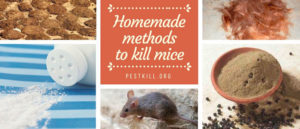



we think we have voles in our garden. There are numerous holes everywhere. Please advise a natural way of getting rid of these pests